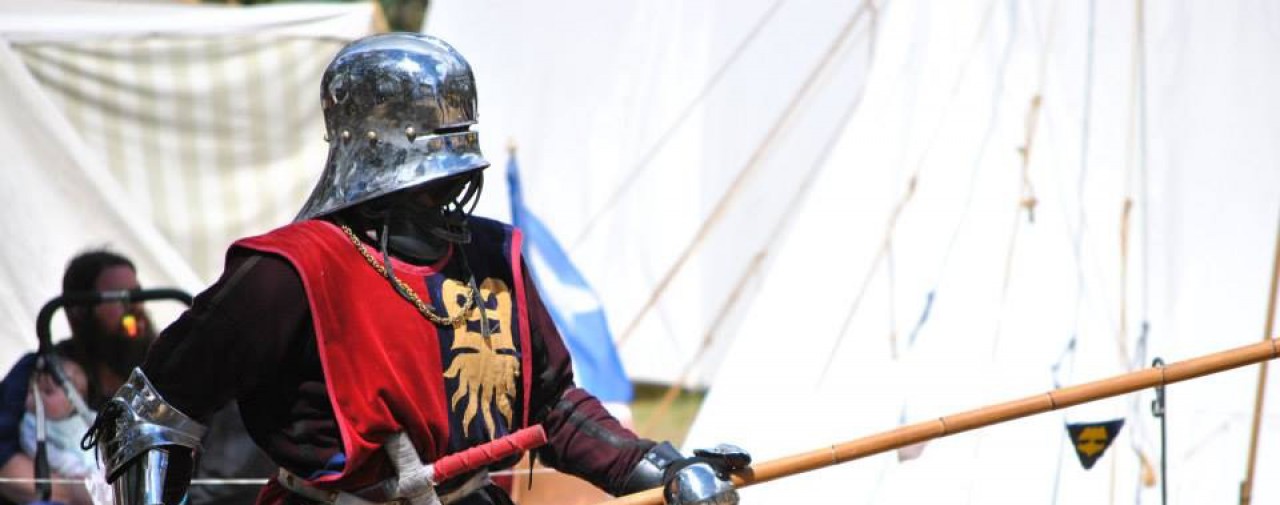Hi folks.
A few people have been requesting a list of various training drills that I have. So Instead of emailing stuff out I will put it all here. I wrote another post about drills and that can be found HERE. Anyway – let me know if you have any questions or would like to share your own drills. I may do a quick post about how to design useful drills for your own training.
So to start off with some strength exercises.
Strengthening/physical (armoured combat specific) You may want to google these to get the form right.
Pell Squats (core, legs, arms)- Throw two shots to the pell do a squat. Variation – side squats/lunges.
Helm sit ups (core, arms)- Start in a sit up position, holding a helm above your head. Do a sit up keeping the helm in the air (you will need to push the helm towards your knees as you come up. Do not secure your feet).
Turkish get ups (core, legs, arms)- Lie on your back, holding a weight (your sword) up with a straight arm. Stand up and then lie down again keeping your arm held straight up.
Mower pulls (core, legs, arms) –Stand with legs wider than shoulders. Hold a lightish (your helm) weight in one hand. Reach down to your opposite foot. Now come back up and quickly reach the arm diagonally up and out to were you are reaching up at 45 degrees.
Kettlebell swings (core, legs, arms) – Hold a helm (or heavy weight) in front of you. Now let the weight drop down between your legs, bending your knees. Let it then swing back up over your head and then let it drop back down. Keep the weight moving.
Helm rotations (core) – Sit on the ground with your legs in front. Hold your helm on the ground next to your hip. Move it to the other side, touching the ground.
Wind ups (wrist strength) – Using a strong cord tie it to your helm and to your sword. Hold the sword in front of you in both hands. Now ‘wind up’ the sword to lift the helm up to the sword and the unwind it. You can always make this up with a bit of dowel and a half brick.
And now fighting drills
1-6 Pell Drill – From Duke Jade of Starfall – strike the pell in two cut combinations (1-1, 1-2, 1-3 etc)
4-5 Drill – Squire cuts 1,6,1,6 stepping forward at each cut. (4 steps) Knight maintains distance by stepping back and correctly blocking each cut. Squire then cuts 1-6-1-6-1 moving backwards (5 steps) with the Knight following and blocking.
-Variation. Change the cuts eg 1-4 or 3-6.
The Tower (this can hurt, so pull the power down) – Squire holds the field and must defend. Knights line up and in turn attack with a set number of attacks. Squire works on defence and Knights work on continuous attacks (they must not let their from go to crap). Number of attacks should be between 6-10.
Openings – Stand on the edge of measure. Knight moves shield to provide opening. Squire must cut to that opening.
This is about seeing opportunities to attack and acting on it. The Knight should close the opening if the Squire takes too long. The time here depends on the experience of the Squire. Limit the possible openings dependant on experience. Openings (keep it simple)-lower shield cut 1, lift shield cut 3, open shield cut 5, cross shield wrap.
Response Drill –Squire holds the field. Knights form a line. Nominate a standard opening attack. The knights will step in and throw that attack and the squire must deal with it in some way of their own choosing (parry, dodge or displace) and counter. Keep the line moving through. For newer people you may want to nominate the response.
Progressions – Start with the Squire making a single attack from the edge of measure. Do this several times to get the footwork and technique working. The Knight can block this. Next, the Squire adds a second attack – hopefully exploiting an opening due to the Knight defending the first attack. Work this though a few time and then add a third attack. You can build up counters from the Knight if you want. The idea is to build up a short attacking sequence for the quire. The Knight is working on defending and looking for opportunities to make a counter.
The main thing to remember is to keep things reasonably simple. Chose one or two techniques and work on them. Start slow and build up the pace. When you form starts to go, slow it down and rebuild.
I am going to admit drills can be boring, free fighting is more fun. But you MUST spend the time working on the basics. You need to do things 1,000s of times, not just a few times every now and again…
